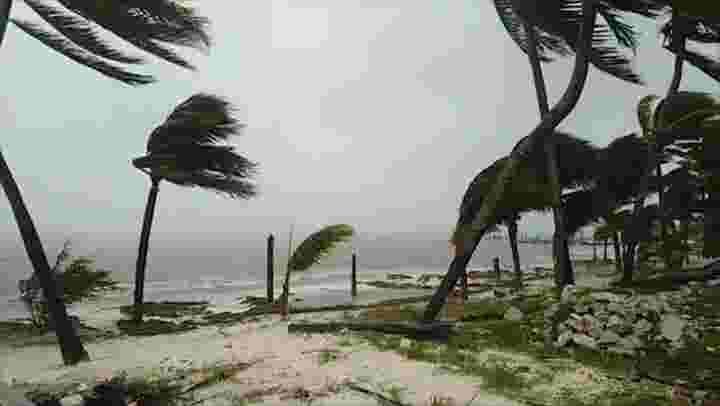
A tropical storm warning was in effect for the northern half of the peninsula's Caribbean coast, covering Cancun, the Riviera Maya and other resorts.
The storm came ashore near Tulum with maximum sustained winds of nearly 70 mph (110 kph) — 4 mph (9 kph short of hurricane force), according to the US National Hurricane Center in Miami.
By mid afternoon, winds had dipped to 65 mph (100 kph), and it was centered about 35 miles (60 kilometers) north-northwest of Tulum, moving to the northwest at 8 mph (13 kph).
Forecasters said the biggest threat to the area, which recently reopened to tourism after a pandemic shutdown, was likely the torrential rain and possible flooding, with as much as 10 to 15 inches (250 to 375 mm) possible over the northeastern part of the peninsula.
Social media accounts of Quintana Roo's state government showed police removing people from vulnerable shacks and removing downed trees.
The storm forced suspension of sea ferry services between Cancun and Playa del Carmen with the islands of Cozumel and Isla Mujeres.
Esto ayer aquí en Cancún, Hotel Temptation 02/10/2020 llegaba la #TormentaTropical #TormentaTropicalGamma a #QuintanaRoo #October3rd #AlertaRoja pic.twitter.com/rQNXW3Dsfo
— Christopher Robin 🇻🇪 (@ChrisRoOficial) October 3, 2020
The storm was projected to emerge from the northern edge of the Yucatan on Sunday and then curve toward the west-southwest into the lower Gulf of Mexico, flinging heavy rains across a large part of southern Mexico and Central America.
Meanwhile, powerful Hurricane Marie began to weaken Saturday over the open Pacific.
Marie was a Category 4 hurricane with maximum sustained winds of 130 mph (215 kph) Friday evening, according to the Hurricane Center, but winds dipped to Category 3 status, 125 mph (205 kph) by Saturday.
It was centered about 1,150 miles (1,850 kilometers) west of the southern tip of the Baja California Peninsula and was headed to the northwest at 9 mph (15 kph).
Forecasters said it shouldn't pose a threat to land.



Reader Comments
to our Newsletter